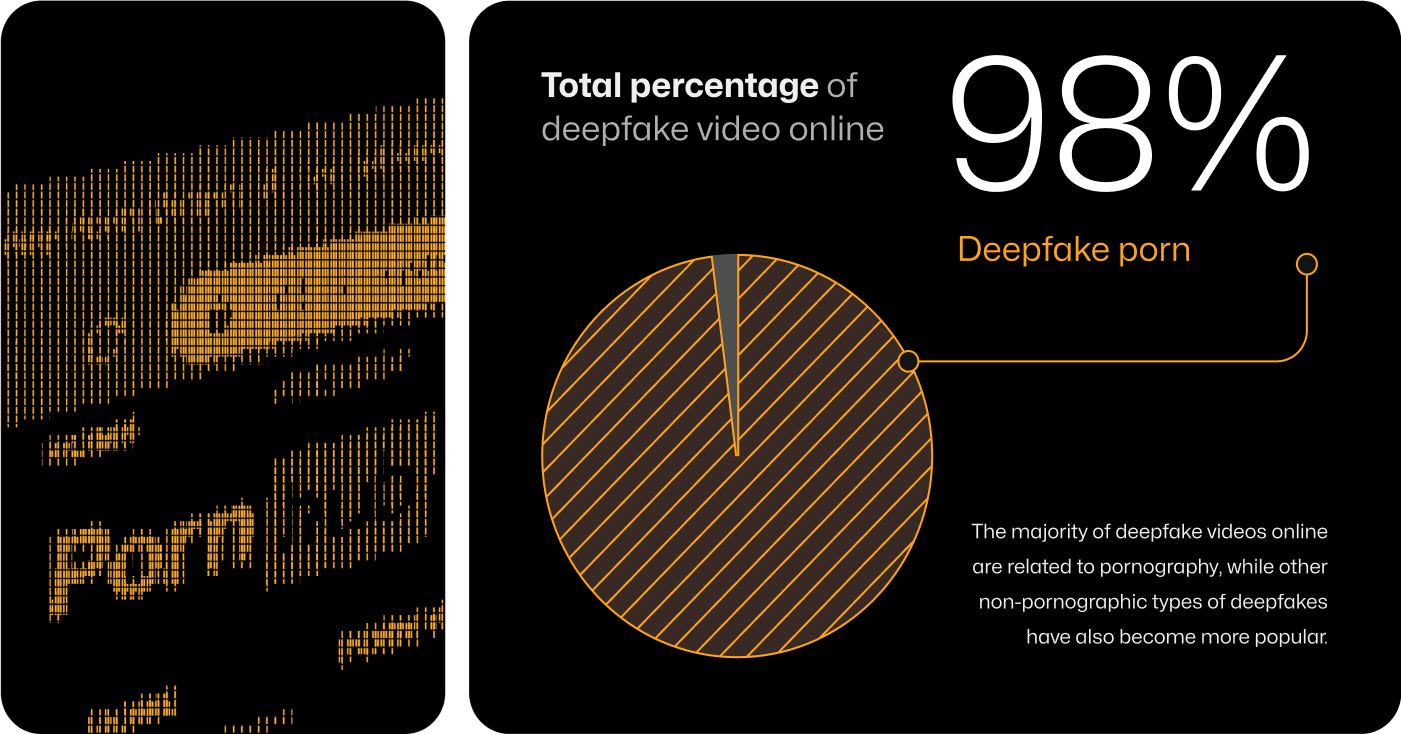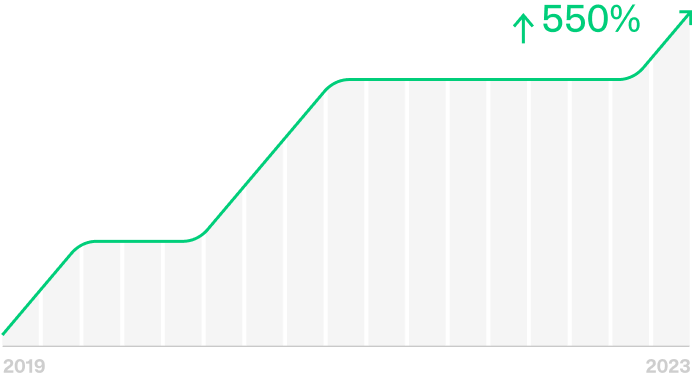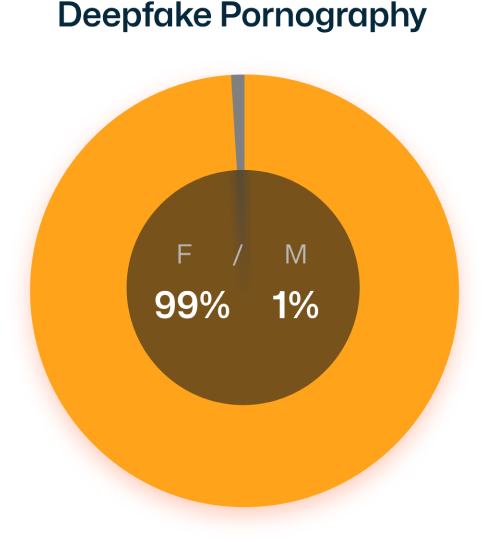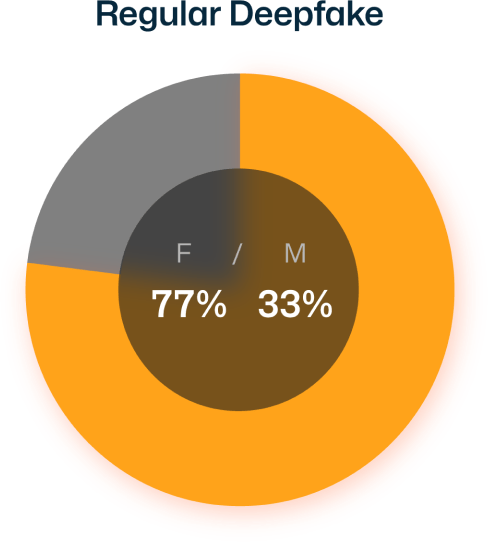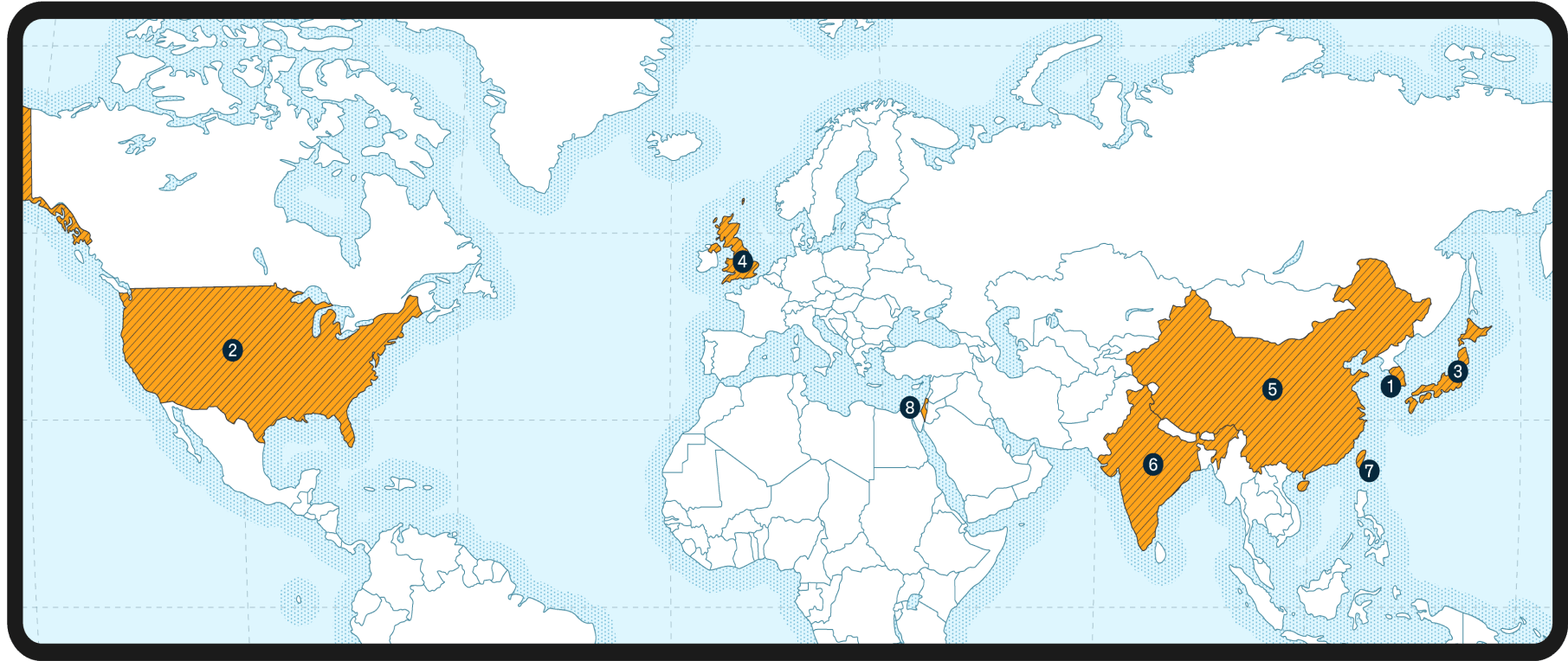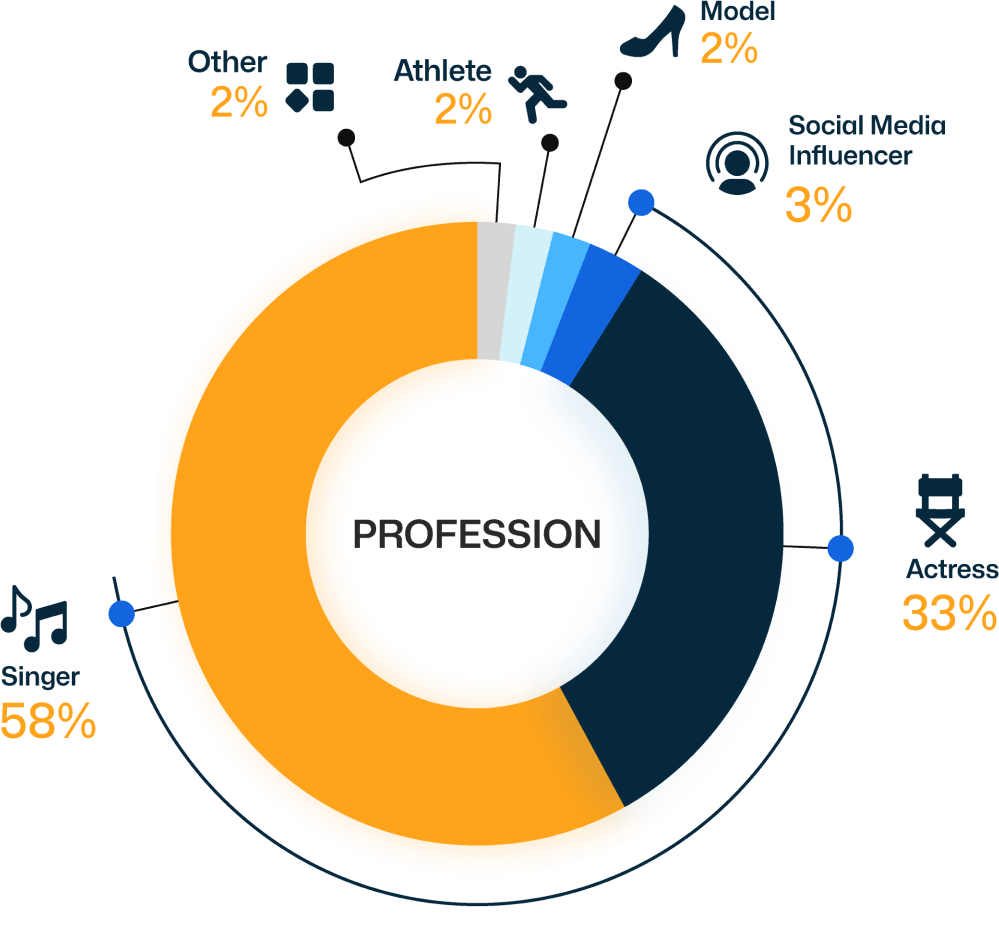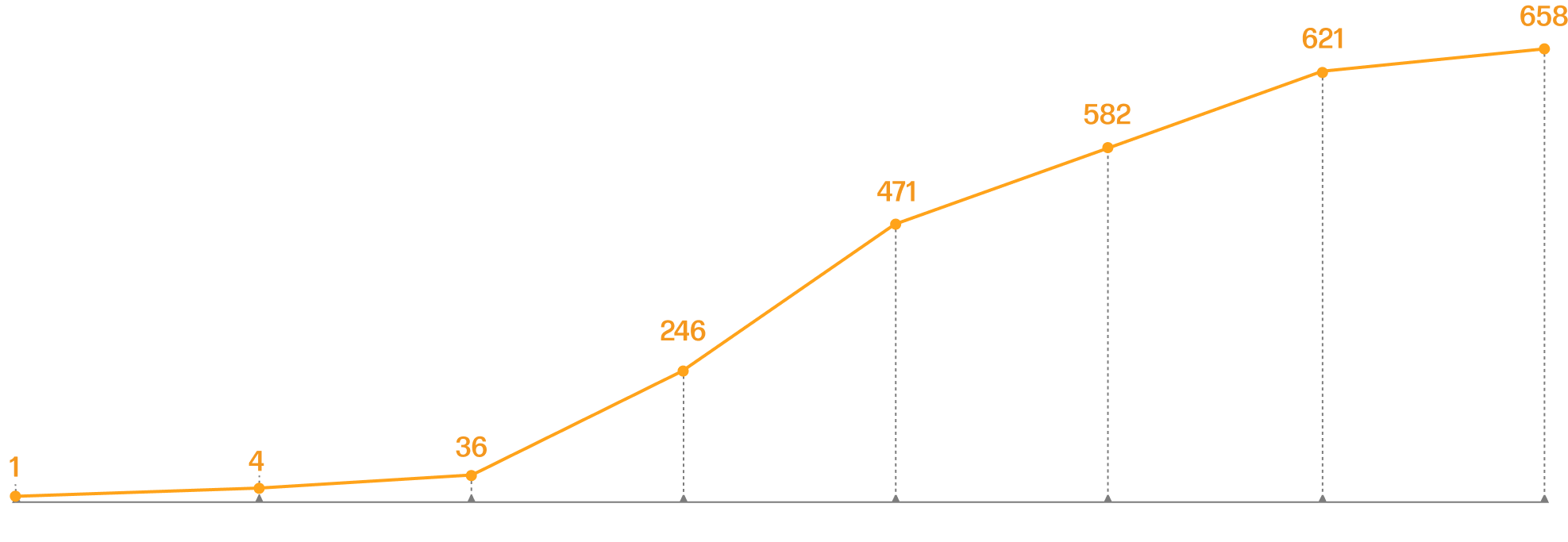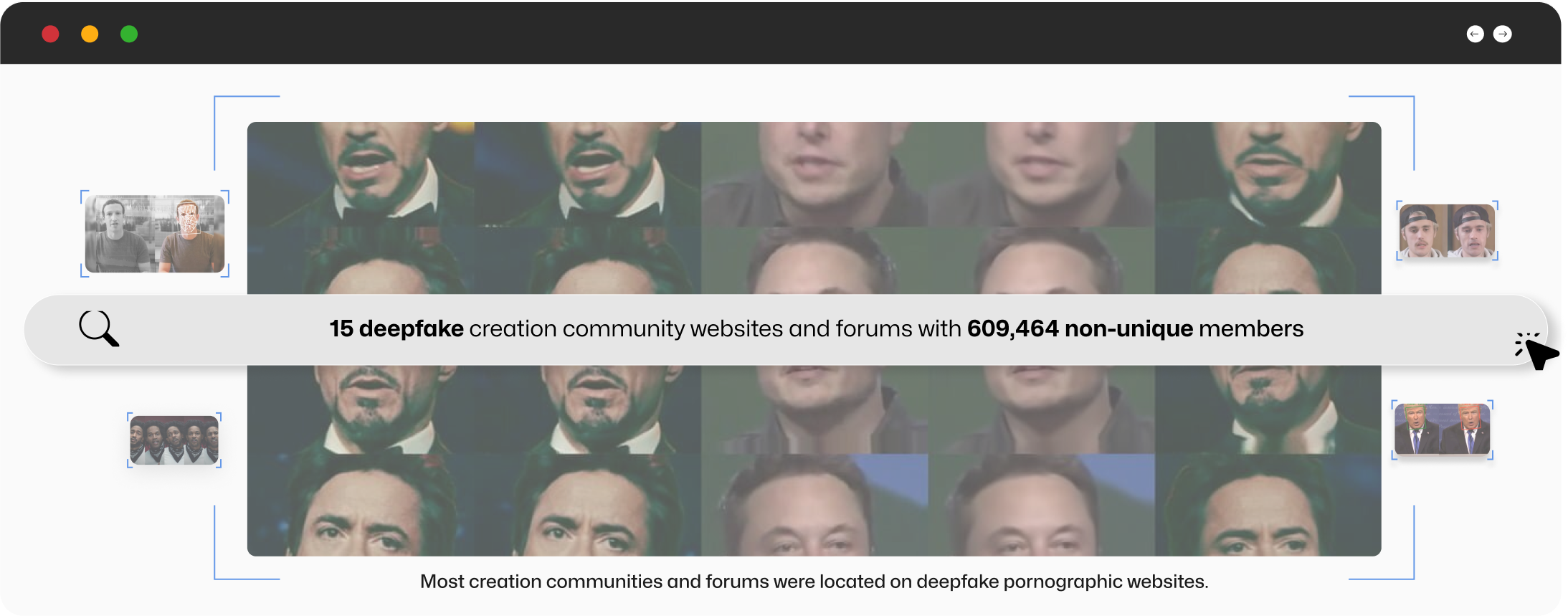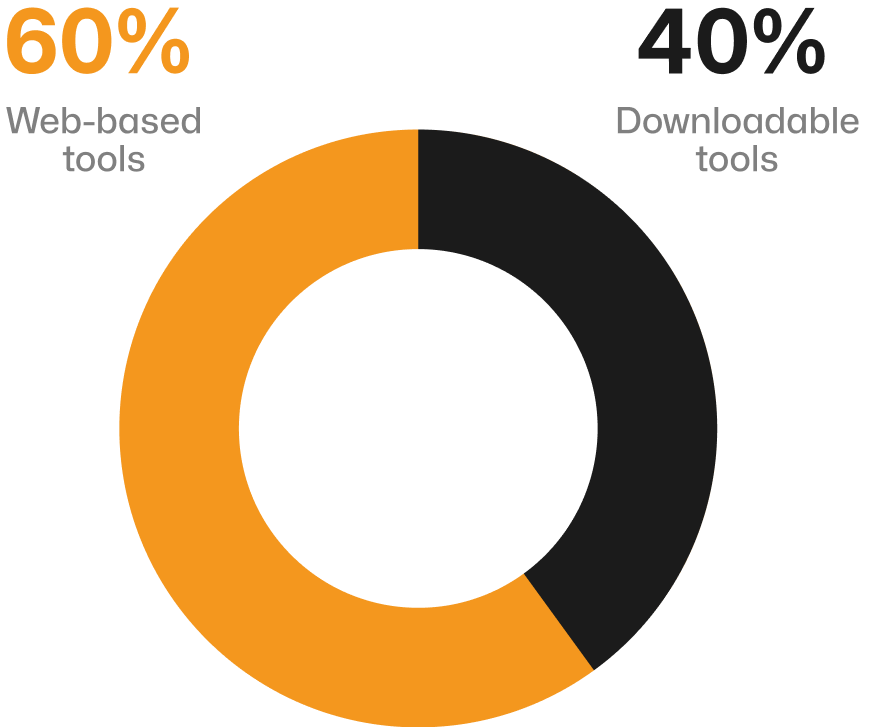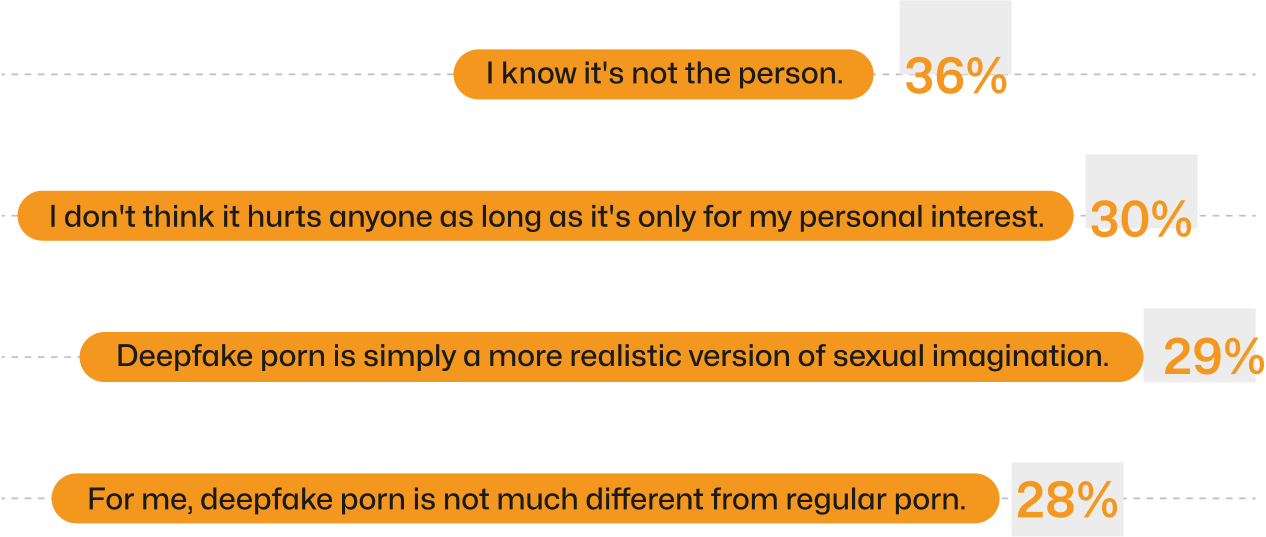Below is a demographic breakdown of deepfake videos from top 10 dedicated deepfake pornography websites and 85 deepfake channels on Youtube, Vimeo, and Dailymotion. Deepfake content production is not uniform but selective, with specific individuals becoming prime targets based on gender, nationality, and profession.
This deliberate focus on particular attributes reflects the nuanced motivations and objectives behind creating and disseminating deepfake material.
Gender plays a significant role in selecting individuals for deepfake content manipulation. In this section, we embark on a thorough exploration of the demographic makeup of deepfake videos.
The intersection of technology, creativity, and audience preferences becomes distinct as we uncover the role that gender plays in selecting individuals for deepfake content manipulation.
99% of deepfake pornographic content comprises female subjects
A glaring trend emerges when examining the demographic landscape of deepfake content. Our findings reveal that 99% of deepfake pornography features women as the primary subjects, while only 1% of the content features men.
Nationality is another factor that influences the targeting of individuals by deepfake content. In some instances, a person's nationality may make them a more attractive target for malicious actors. This can be motivated by geopolitical tensions, cultural stereotypes, or simply the desire to create content that resonates with a specific audience.
This section discusses the countries most targeted by the technology and the extensive effects that it causes.
South Korea is the country most targeted by deepfake pornography
While deepfakes have been employed for various purposes, including entertainment, politics, and disinformation, certain nations are more susceptible to specific forms of deepfake content, particularly those of an explicit nature.
South Korea tops the list of these nations with a 53% rate of susceptibility to deepfake adult content. Other countries on the list include America at 20%, Japan at 10%, and England at 6%. Countries like China, India, Taiwan, and Israel all fall between the 3% to 1% mark, while the rest of the world has a combined 4% rate of being targeted for explicit deepfake content. Below is a table summarizing this information.
| Country |
Susceptibility Rate to Deepfake Pornography |
| South Korea |
53% |
| America |
20% |
| Japan |
10% |
| England |
6% |
| China |
3% |
| India |
2% |
| Taiwan |
2% |
| Israel |
1% |
| Other |
4% |
Profession can also be a decisive factor in selecting targets for deepfake content. Public figures such as celebrities, politicians, and influencers often face a higher risk of being targeted due to their visibility and the potential impact of false or scandalous content on their careers and public standing.
The section below highlights the professions that are more likely to attract unconsented deepfake content generation.
The prevalence of entertainment industry figures in deepfake adult content can be attributed to several factors. First, the high visibility of individuals in this sector makes them more likely targets, as they are readily recognizable to the general public.
Additionally, the availability of extensive visual and auditory material featuring entertainment professionals, such as movies, TV shows, and music videos, provides ample source material for deepfake creators.
Top 10 individuals most frequently targeted by deepfake pornography
Deepfake pornography is characterized by a select group of individuals who find themselves targeted for manipulative and often malicious purposes. These individuals, often public figures or celebrities, bear the brunt of deepfake creators' efforts.
This section delves into the profiles of the top ten most frequently targeted individuals in deepfake pornography. We shed light on the frequency of content that features.
However, due to the sensitive nature of the data, we have opted not to disclose the names of these individuals. Instead, we have provided information about their nationality and profession in the following table.
The frequency with which these individuals are targeted underscores the need for comprehensive strategies to address deepfake threats. Such strategies should encompass legal measures, content detection technologies, and public awareness campaigns aimed at protecting these individuals' rights, privacy, and reputations.
